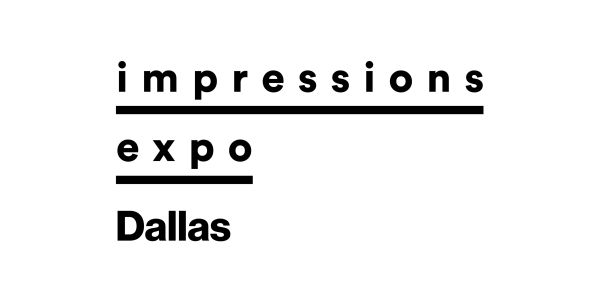Designers and manufacturers seem to be undergoing a back-to-basics evolution, leaving behind opulence and flair, and instead favoring athletic trends and everyday lifestyle. This gravitational pull is evident when it comes to current fleecewear trends.
Manufacturers in this category say that although fleece products may harken back to the 1990s, they still remain the most affordable and comfortable pick in a sea of activewear and outerwear options. An obvious spin-off of the active, outdoor trend that continues to influence multiple consumer demographics and end users, fleece rises to the top for not just the upcoming fall and winter seasons, but conquering the year-round demand for athleisure style.
“The concept of lifestyle apparel is definitely driving fleecewear trends, for instance, the athleisure trend,” says Nabeel Amin, president of Lane Seven Apparel. “Everyone wants to be able to wear their clothing to work, run errands, go to the gym and hang out at home — while being comfortable and trendy at the same time, all of the time. I also think influencers and brand awareness drive trends. For instance, model influencers on Instagram started cropping their own hoodies. Now, it’s a style you can actually buy. People are so aware of what brands do through social media; if a color or wash takes off for one brand with a lot of visibility that took a gamble on it, everyone wants it.”
At retail, consumers have an unquenched thirst for fashion-forward apparel, which has only grown exponentially during the past couple of years. Retro styles have evolved into true classics, and once-vintage pieces now are considered part of a modern wardrobe.
“Retro fleece styles will always be on trend because it’s a classic sweat styling,” says Jeanene Edwards, vice president of activewear marketing and merchandising, Fruit of the Loom and JERZEES. “However, what makes it fresh is a more contemporary and sometimes unexpected take on modern color, trims and piping.”
Limitless Variety
Possibly the most fantastic characteristics of fleece are the endless colors, fabrics and styles available to women, men and youth while also being compatible with layering for three-season wear.
“We have seen growth in classic team colors interpreted into interesting heathers and textures,” Edwards says. “For instance, if you cross-dye navy with pink, it becomes a purple heather, which gives the color a fresher look with more depth. We also see fashion color coming into the ‘neutral space,’ with heathered pinks, mints and soft blues now being marketed as unisex.”
Neutrals and dark heathers have become staple colors across the board. For example, Augusta Sportswear introduced a carbon heather in 60/40 cotton/poly-blend fleece based on dark heather’s popularity.
Delta Apparel and Cotton Heritage also have experienced a wanton increase in earth tones and pastels. “Black, as expected, continues to be strong,” says Ken White, vice president of sales, Cotton Heritage. “We have seen significant interest in our heathers. [Colors] such as military green, wine and carbon, in both tops and bottoms, have all been trending well for us this year.”
Additionally, Gildan Activewear’s Summer Scott has noticed more washed-out palettes with soft, pastel colors that are reminiscent of the past.
Another aspect of fleecewear’s flexibility includes the cuts and silhouettes marketed to women and men, respectively. With oversized styles still being popular — particularly in heavyweight hoodies — consumers have begun to gravitate toward a more fitted option.
Notably, apparel is becoming more casual, with end users now even wearing fleece in the workplace. Thus, more premium offerings with interesting fabrics, colors and trims are becoming available for consumers wanting the casual-but-not-too-dressed-down look.
Ladies who prefer a more fitted silhouette have more feminine and flirty options, such as the cropped hoodie. The women’s fleece segment allows decorators to boost sales, especially with Millennial and Gen-Z customers who are accustomed to wearing fleece as part of their everyday wardrobes.
Although men’s trends in street, surf and skate wear lean toward baggy, boxy fits, a more retro, yet sleek look is upon us. Men are becoming more aware of fashion, fit, trends, etc., and enjoy today’s popular fleecewear colors and cuts, Amin says. A rugged-but-fitted look in heavier fleece appears to be an emerging trend for these consumers.
Youth fleecewear, on the other hand, tends to be more value-driven, mainly due to the speed at which the wearers grow. However, suppliers say Millennials are showing a preference for “mini-me” styles, reflecting young parents’ tastes. Thus, upselling to include such options has become more possible than ever.
Fleecewear’s Future
When looking toward the future of fleecewear, suppliers see the growth of tri-blends and French terry; a continued focus on DTG compatibility; new technical advances; and a surge of three-end fleece — all of which means more premium options in the category.
“We will look to expand our offering in 2019 in fleece and French terry,” White says. “The most significant developments for Cotton Heritage in fleece has been our jogger and fleece short. These styles continue to surpass all projections and appeal to a broad customer base. Both have been successful and have forced us to look at opportunities in women’s, men’s and youth [styles].”
New technology, colors, cuts and fabric weights will further broaden the scope in the fleecewear scene as trends shift. With fashion merging with comfort and casual styles, it’s clear that fleecewear is here to stay.





